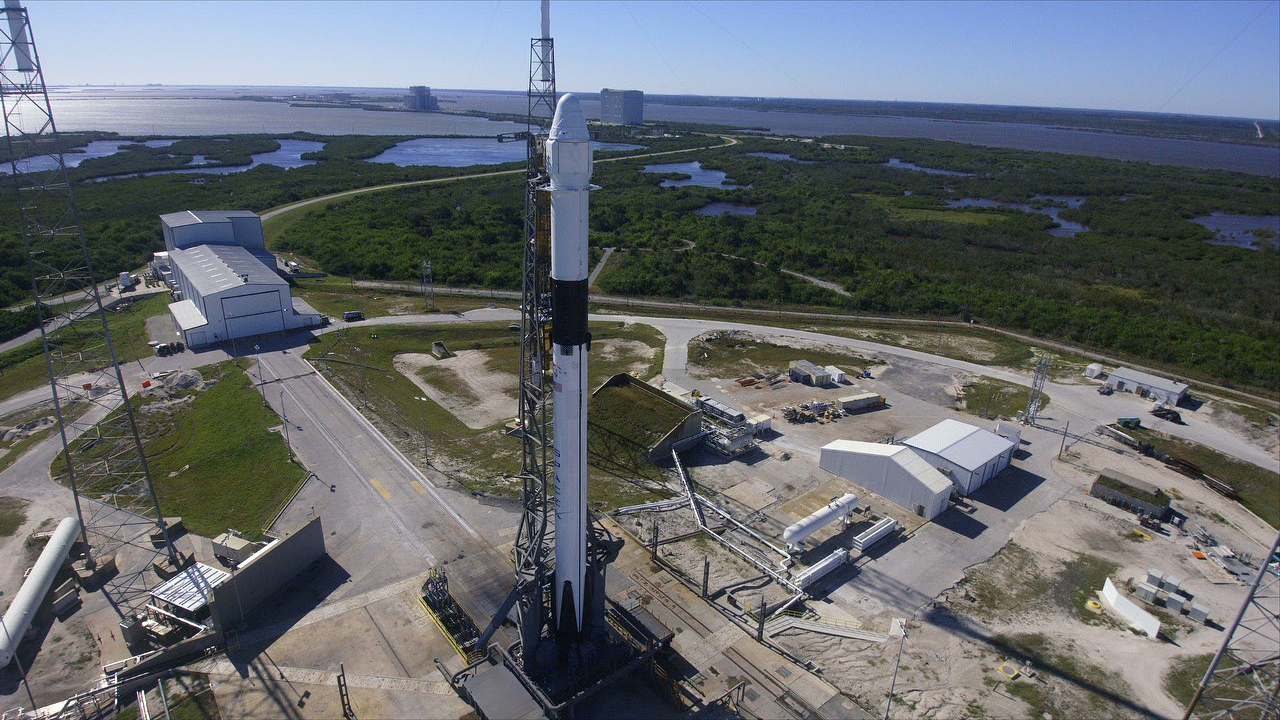SpaceX Delays Next Dragon Cargo Launch to May 1
Liftoff is set for 3:59 a.m. EDT (0759 GMT).

SpaceX has pushed back the launch of a Dragon cargo mission for NASA this week by 24 hours, with liftoff now targeted for Wednesday (May 1).
The uncrewed Dragon resupply ship will now launch to the International Space Station Wednesday at 3:59 a.m. EDT (0759 GMT) from Space Launch Complex 40 at Cape Canaveral Air Force Station in Florida, according to SpaceX and NASA. SpaceX test-fired the Falcon 9 rocket that will launch the mission on Saturday (April 27).
"Static fire test of Falcon 9 complete — targeting May 1 launch from Pad 40 in Florida for Dragon's seventeenth mission to the @Space_Station," SpaceX representatives said in a Twitter update on the mission.
Related: How SpaceX's Dragon Space Capsule Works (Infographic)
The one-day launch slip follows a four-day delay of the mission (it was initially scheduled to launch April 26) by NASA and SpaceX "due to station and orbital mechanics constraints," NASA officials said at the time.
SpaceX representatives said the company would use those four extra days for launch vehicle checks and the Falcon 9 static fire test, which fired the booster's first stage engines briefly. Static fire tests are a standard SpaceX activity before every launch.
The upcoming Dragon cargo mission will be SpaceX's 17th delivery flight for NASA. The spacecraft will deliver more than 5,500 lbs. (2,495 kilograms) of fresh supplies, experiment hardware and other gear to the Expedition 59 astronauts currently on the space station.
Get the Space.com Newsletter
Breaking space news, the latest updates on rocket launches, skywatching events and more!
SpaceX also has a contract to fly astronauts to the station for NASA using the company's new Crew Dragon spacecraft, which made its first uncrewed test flight in March. An in-flight abort system test for Crew Dragon is expected later this year, followed by a crewed test flight by NASA astronauts.
But before SpaceX can proceed with the in-flight abort test, the company must complete its investigation into an April 20 anomaly during a Crew Dragon abort system test. That anomaly occurred as SpaceX was testing the Crew Dragon's eight SuperDraco abort engines on a test stand at Landing Zone 1, one of the company's two rocket landing pads at Cape Canaveral Air Force Station.
Meanwhile, SpaceX is also gearing up for another big mission: the next launch of its massive Falcon Heavy megarocket.
Last week, SpaceX successfully test fired the center core stage of the Falcon Heavy that will be used to launch the Space Test Program-2 mission for the U.S. Air Force. That mission will include a host of different payloads for the U.S. Air Force, NASA, Planetary Society and other customers.
- See the Evolution of SpaceX's Rockets in Pictures
- The Emergency Launch Abort Systems of SpaceX and Boeing Explained
- SpaceX Cargo Launch Still On Track Despite Crew Dragon Anomaly
Email Tariq Malik at tmalik@space.com or follow him @tariqjmalik. Follow us @Spacedotcom and Facebook.
Join our Space Forums to keep talking space on the latest missions, night sky and more! And if you have a news tip, correction or comment, let us know at: community@space.com.

Tariq is the Editor-in-Chief of Space.com and joined the team in 2001, first as an intern and staff writer, and later as an editor. He covers human spaceflight, exploration and space science, as well as skywatching and entertainment. He became Space.com's Managing Editor in 2009 and Editor-in-Chief in 2019. Before joining Space.com, Tariq was a staff reporter for The Los Angeles Times covering education and city beats in La Habra, Fullerton and Huntington Beach. In October 2022, Tariq received the Harry Kolcum Award for excellence in space reporting from the National Space Club Florida Committee. He is also an Eagle Scout (yes, he has the Space Exploration merit badge) and went to Space Camp four times as a kid and a fifth time as an adult. He has journalism degrees from the University of Southern California and New York University. You can find Tariq at Space.com and as the co-host to the This Week In Space podcast with space historian Rod Pyle on the TWiT network. To see his latest project, you can follow Tariq on Twitter @tariqjmalik.









